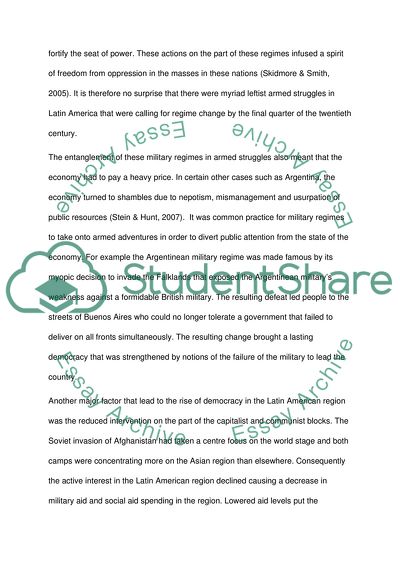Retrieved from https://studentshare.org/history/1587600-why-did-so-many-countries-turn-to-democracy-in-the-final-quarter-of-the-20th-century-in-latin-america-illustrate-your-answer-with-examples
https://studentshare.org/history/1587600-why-did-so-many-countries-turn-to-democracy-in-the-final-quarter-of-the-20th-century-in-latin-america-illustrate-your-answer-with-examples.


